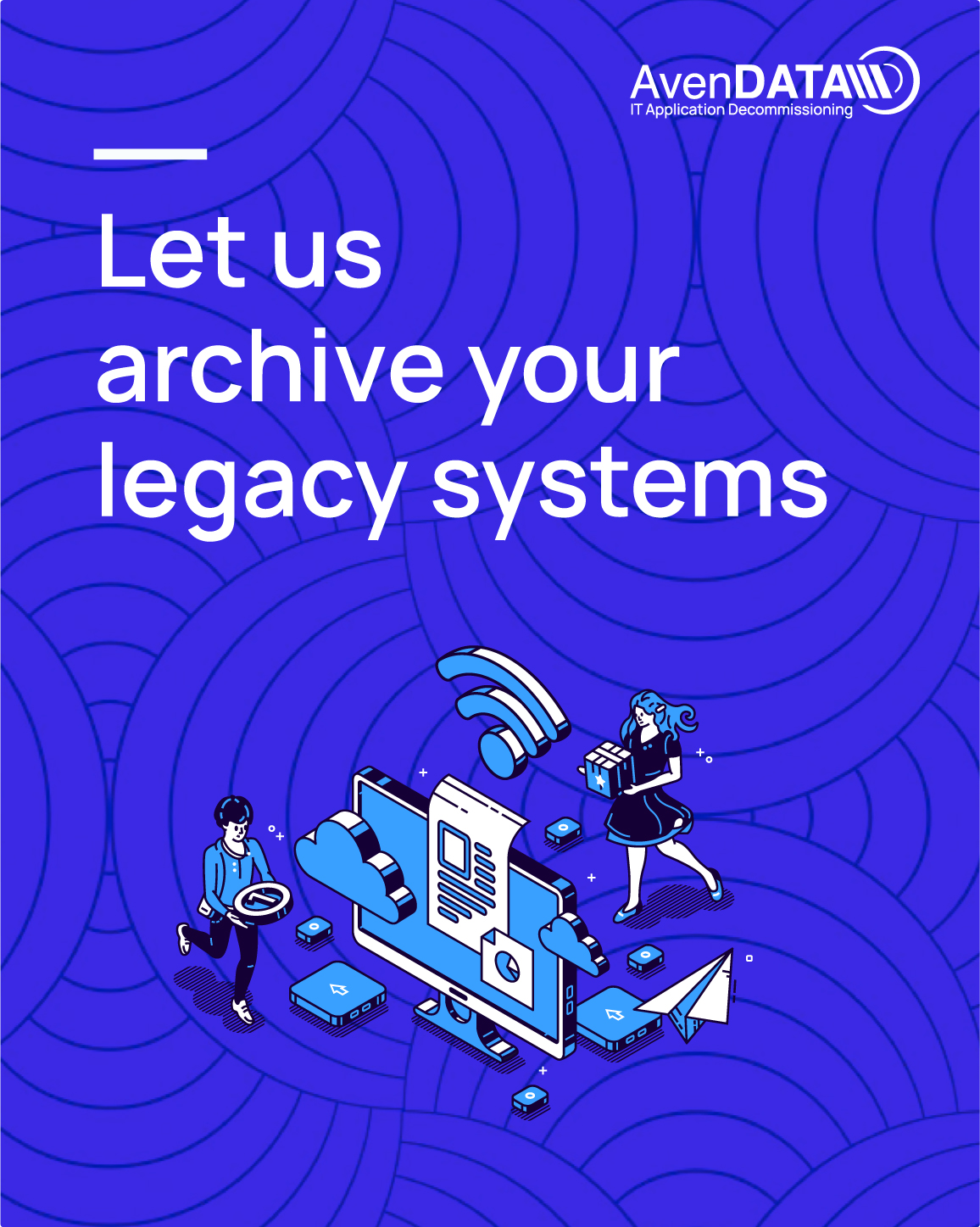AvenDATA: Bridging the Application Decommissioning Gap

Decommissioning legacy systems is important to eliminate unproductive systems and ensure future data retention, allowing organizations to optimize their operations.
AvenDATA is a reliable partner that decommissions legacy systems in compliance with legal regulations, using their expertise to identify and decommission out-of-service setups and effectively manage critical applications.
AvenDATA follows a systematic approach, considering various viewpoints, analyzing feasibility and implementation potential, overcoming hurdles, and aligning with customer-centric needs to retain and manage data optimally.
ViewBox is an efficient solution provided by AvenDATA that identifies and prioritizes systems, evaluates the cost and benefits, establishes goals, and manages archived content securely, ensuring compliance, user access restrictions, and easy search and retrieval mechanisms.
AvenDATA’s dedicated team with their extensive skillset fuels the decommissioning process, providing secure system access, data export protocol, training, coordination with accountants and auditors, and managing document files, creating a successful and optimized solution for organizations.
AvenDATA’s unique solution, ViewBox, bridges the gap in IT application decommissioning, enabling organizations to safely decommission legacy systems and effectively manage their data, making them a trustworthy partner in the process.
-
How Legacy Systems Work and Their Architecture
-
Legacy Systems in Digital Era:
-
SAP Carve-Out Guide: Definition, Process, Benefits
-
System Decommissioning: A Strategic Guide
-
20 Reasons why legacy ERP systems must be archived and data should not be deleted
-
IT Mergers and Acquisitions: The ABCs of a Successful Integration
-
Mastering IT M&A and Carve-Outs: Addressing Pain Points with Practical Solutions
-
Modernizing Legacy Systems: A Strategic Guide for IT Company Owners
-
The importance of legacy systems is steadily increasing
-
Ten Key Questions with Emanuel Boeminghaus



